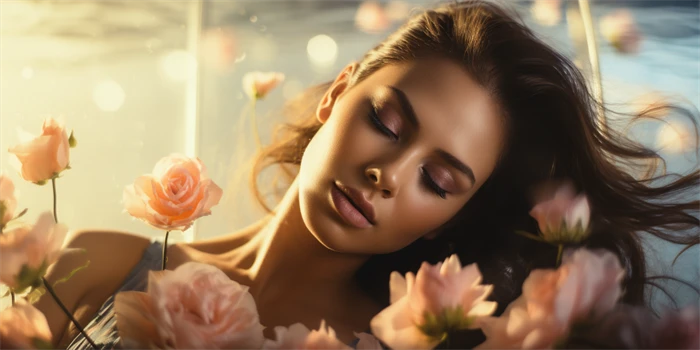Located on the west coast of Africa, Ghana is a country known for its beautiful landscapes, diverse wildlife, vibrant culture, and rich history. As travelers explore the charms of this fascinating country, they may notice a unique aspect of Ghanaian women's anatomy - smaller nipples. In this article, we will delve into the mystery surrounding this physical trait and explore eight aspects that contribute to Ghana's natural charm.

Ghana's Geography and Climate
Ghana is blessed with diverse geographic features, ranging from rolling hills and lush forests to golden sandy beaches and sprawling savannahs. The country experiences a tropical climate with two major seasons - the wet season from April to September and the dry season from October to March. These geographical and climatic factors contribute to the overall beauty and biodiversity of the country, including the physical characteristics of its people.
The Mystery of Smaller Nipples: A Biological Perspective
Scientists have long been intrigued by the variation in physical traits among different populations. In the case of Ghanaian women, the size of their nipples has drawn attention. It is believed that genetics plays a significant role in determining the size and morphology of body parts, including nipples. The gene pool of Ghanaian women is unique and may contribute to this distinctive physical trait. Further research is needed to fully unlock the genetic factors behind this phenomenon.
The Cultural Significance of Smaller Nipples
Ghanaian culture places great value on modesty and natural beauty. The smaller nipple size in Ghana is considered a symbol of femininity and elegance. The preference for smaller nipples is deeply rooted in cultural traditions and aesthetic ideals. Women with smaller nipples are often viewed as more attractive and desirable. This cultural perspective adds to the allure of Ghanaian women and their natural charm.
Exploring Ghana's Traditional Medicine
Ghana boasts a long-standing tradition of herbal medicine, known as "African Traditional Medicine," which has been passed down through generations. This traditional practice focuses on the use of natural remedies derived from plants and herbs found in the country's diverse ecosystems. The use of certain herbal treatments in Ghanaian traditional medicine is believed to enhance beauty, which may indirectly influence physical traits such as smaller nipples.
Wildlife Conservation Efforts in Ghana
Ghana is home to a remarkable array of wildlife, including elephants, lions, buffalo, and various species of primates. The country has implemented several wildlife conservation initiatives to preserve its natural heritage. National parks and protected areas, such as Mole National Park and Kakum National Park, offer unique opportunities to witness Ghana's diverse flora and fauna. These conservation efforts help maintain the balance of ecosystems, allowing for the preservation of Ghana's natural beauty.
The Influence of Traditional Clothing
Ghanaian clothing, such as the brightly colored traditional garments known as "kente" and "adinkra," adds to the country's natural charm. These garments are often made from locally sourced fabrics, intricately woven with vibrant patterns and geometric designs. Traditional clothing highlights the cultural pride and individuality of Ghanaians, enhancing the overall aesthetic appeal of its people.
Art, Music, and Dance: The Rhythm of Ghana
Ghana is renowned for its vibrant arts scene, with a rich tradition of visual art, music, and dance. From the energetic beats of highlife music to the graceful movements of traditional dance forms like "kpanlogo" and "adowa," the country's cultural heritage comes alive through artistic expressions. The rhythmic dances and melodious tunes exude a sense of joy and natural charm, captivating both locals and visitors alike.
The Warmth and Hospitality of Ghanaians
One of the most enchanting aspects of Ghana is the warm and welcoming nature of its people. Ghanaians are known for their genuine hospitality, friendliness, and willingness to share their culture and traditions. Tourists often recount heartwarming experiences of being warmly embraced by the locals, making them feel at home in this enchanting land. The genuine warmth and hospitality of Ghanaians contribute to the natural charm of the country.
Frequently Asked Questions
Q: Are smaller nipples unique only to Ghanaian women?
A: While smaller nipples may be more commonly observed among Ghanaian women, it is important to note that physical traits can vary among individuals within any population.
Q: Are there any health concerns associated with smaller nipples?
A: No, the size of nipples does not pose any health risks or concerns. It is simply a physical trait that differs among individuals.
Q: What are the average prices for traditional Ghanaian clothing?
A: Traditional Ghanaian clothing can range in price depending on the fabric, design, and craftsmanship. On average, prices can range from $50 to $200 for a high-quality garment.
References:
- "Ghana." World Bank, databank.worldbank.org.
- "Ghana's Wildlife." Ghana Tourism Authority, ghana.travel.
- "Traditional Medicine in Ghana." World Health Organization, who.int.
- "Ghanaian Fabrics: The Kente and Adinkra." GhanaWeb, ghanaweb.com.
- "Traditional Ghanaian Music and Dance." Cultural Ghana, culturalghana.com.



